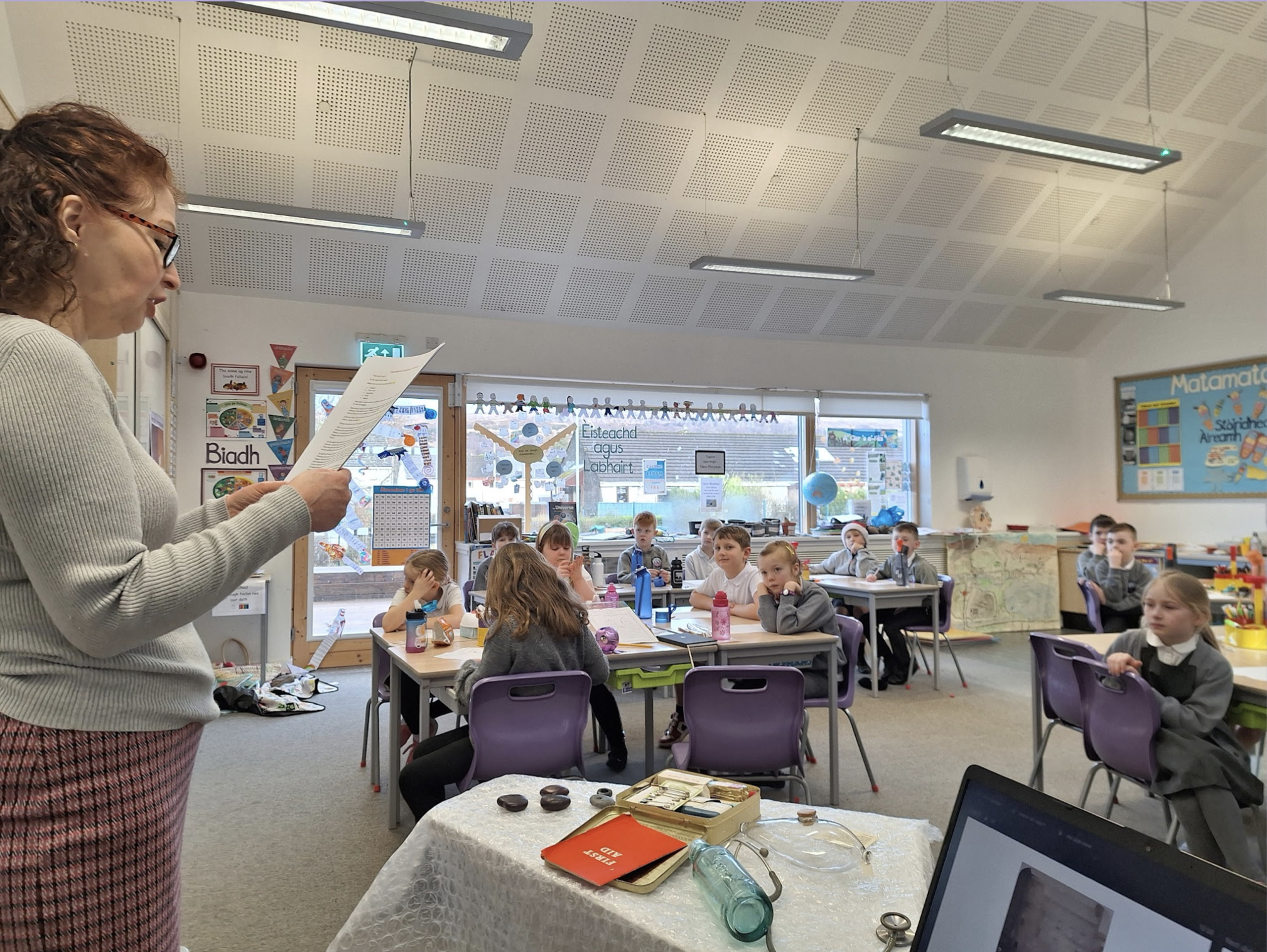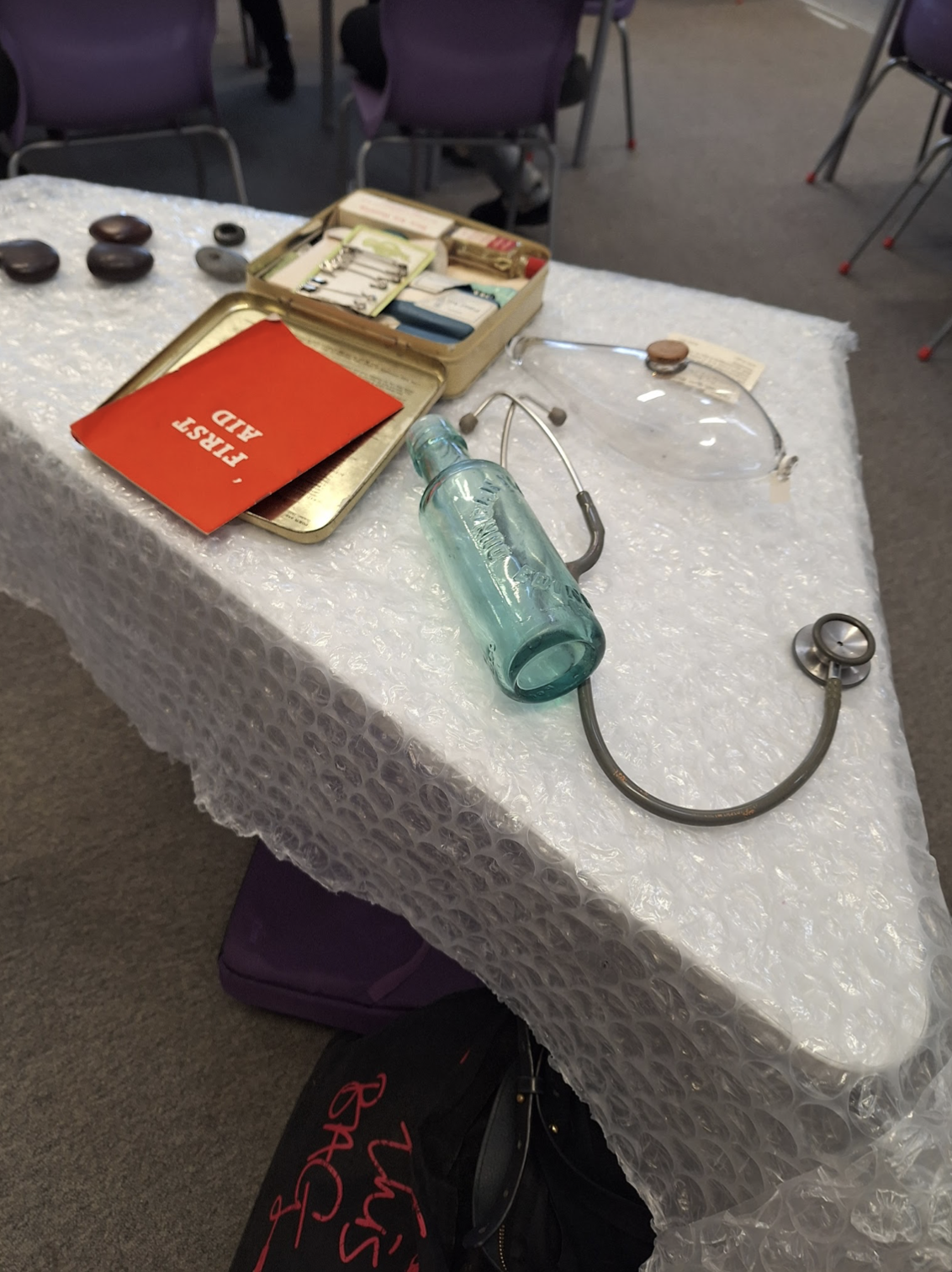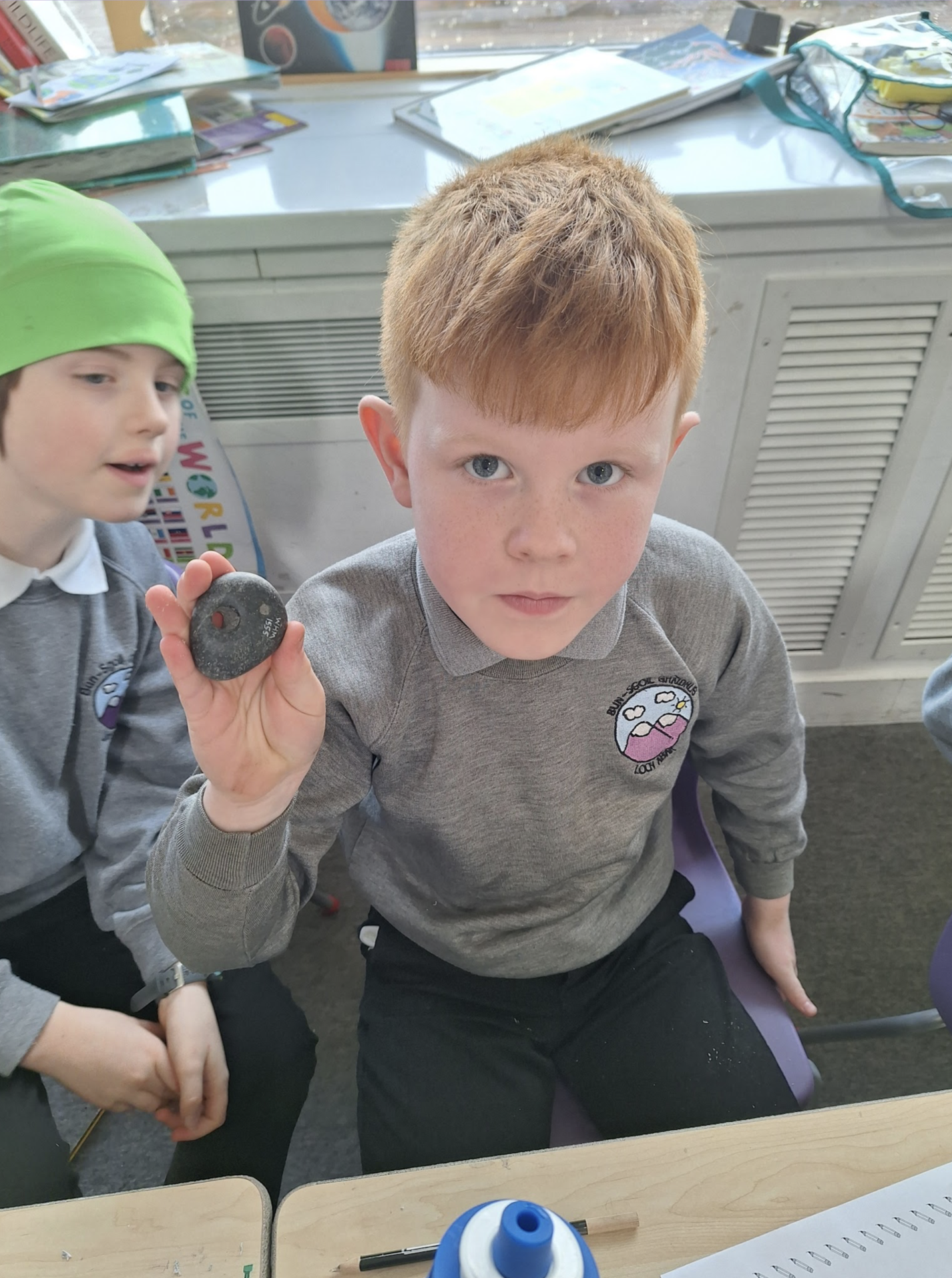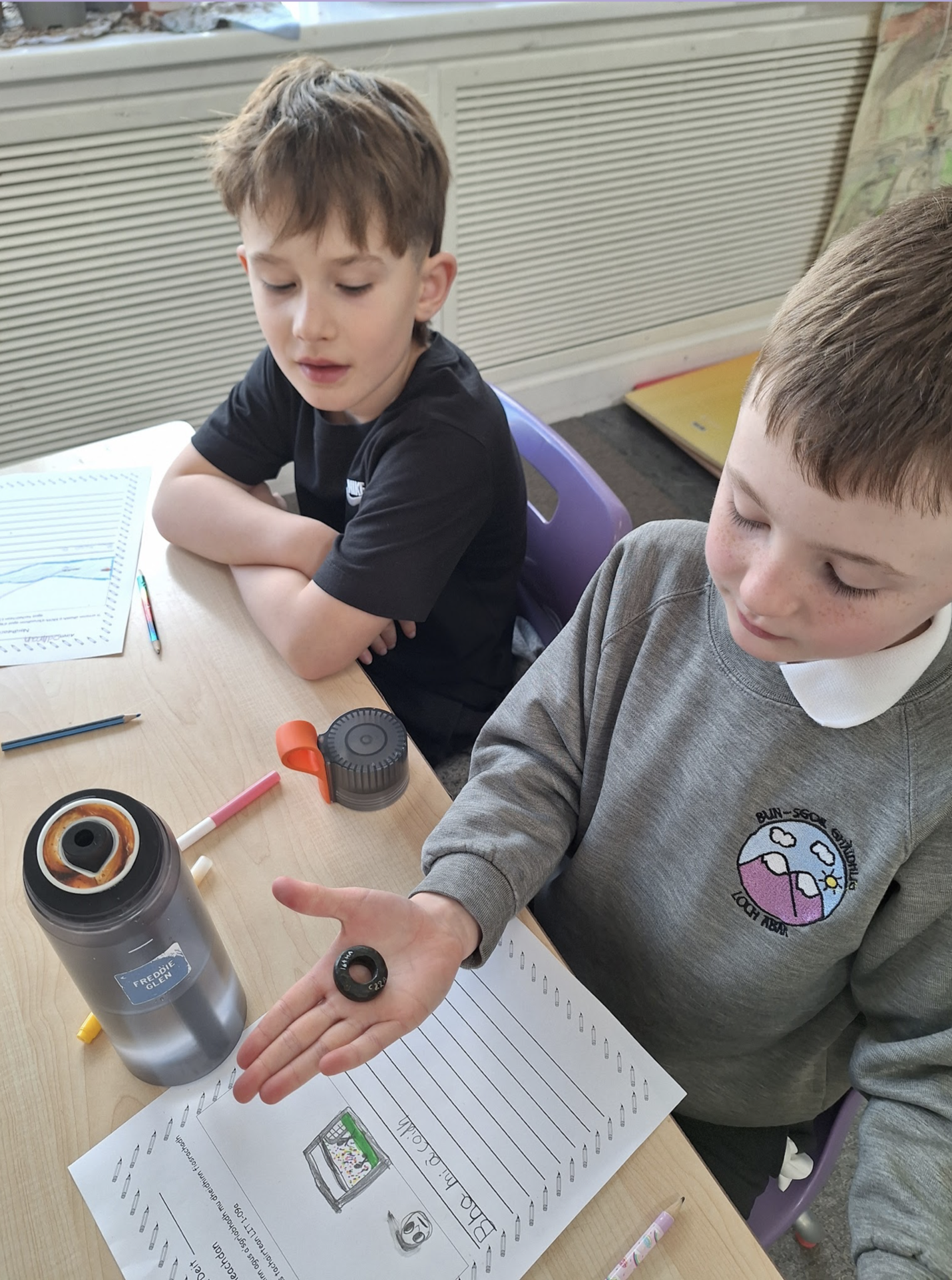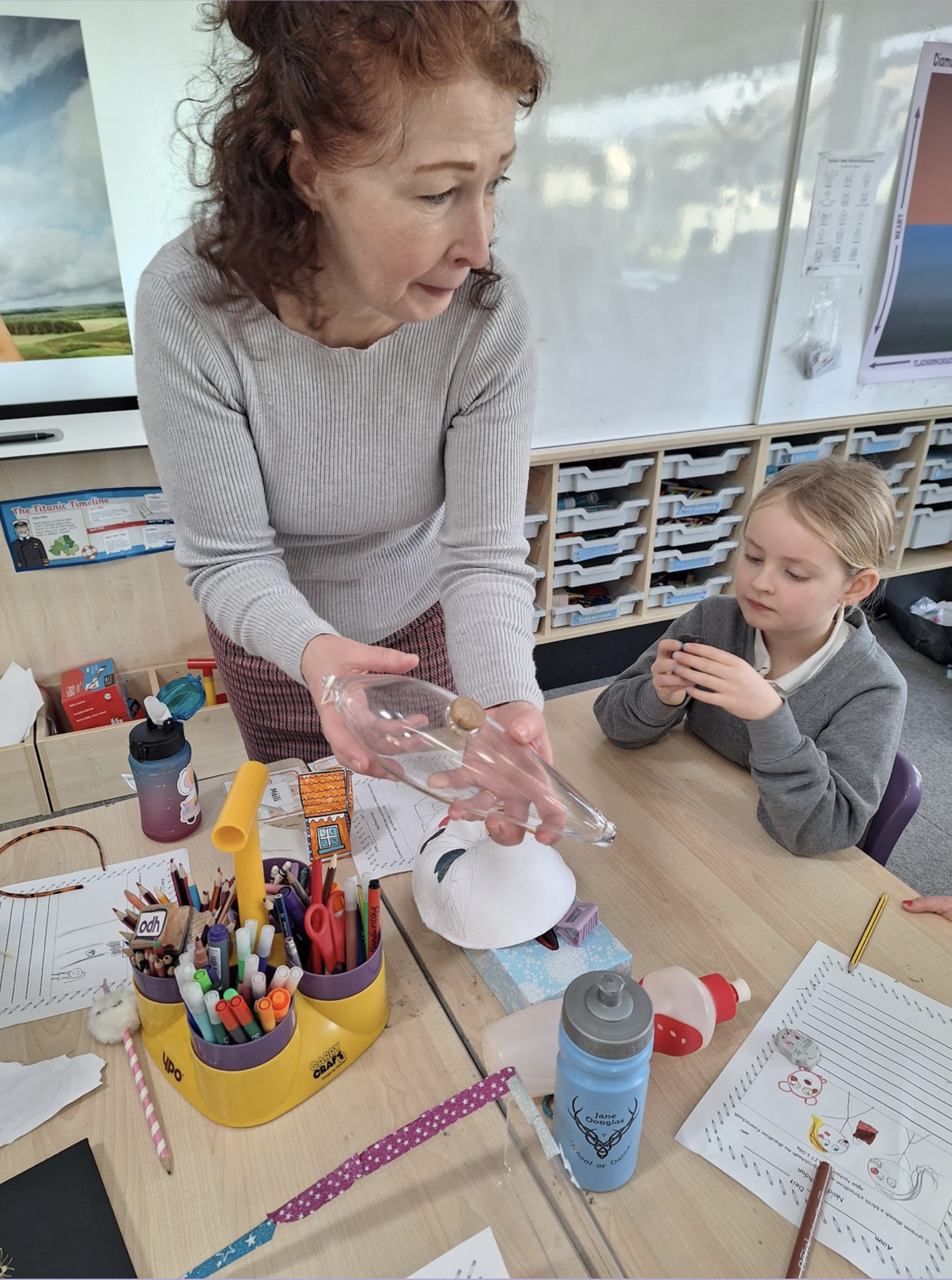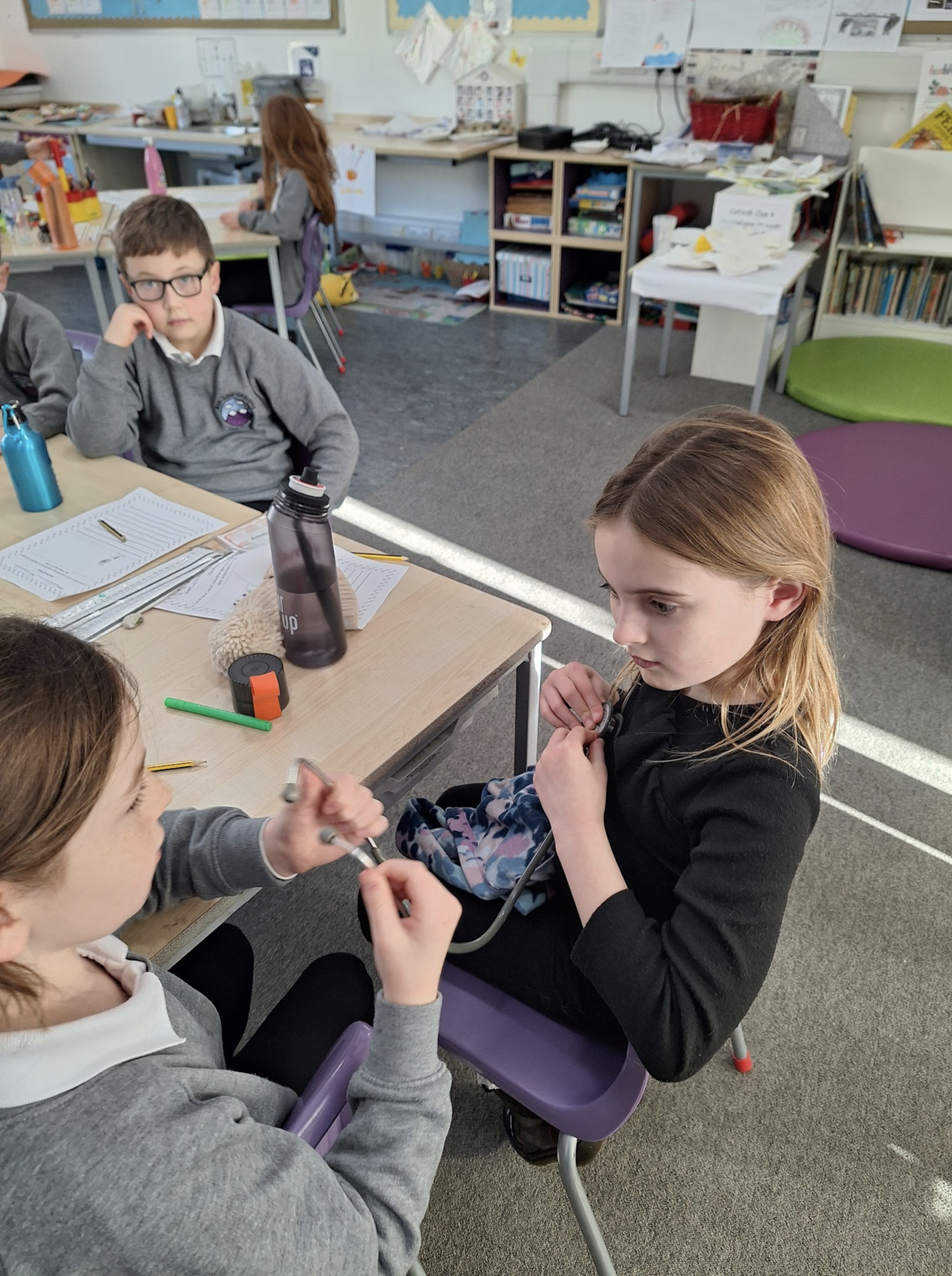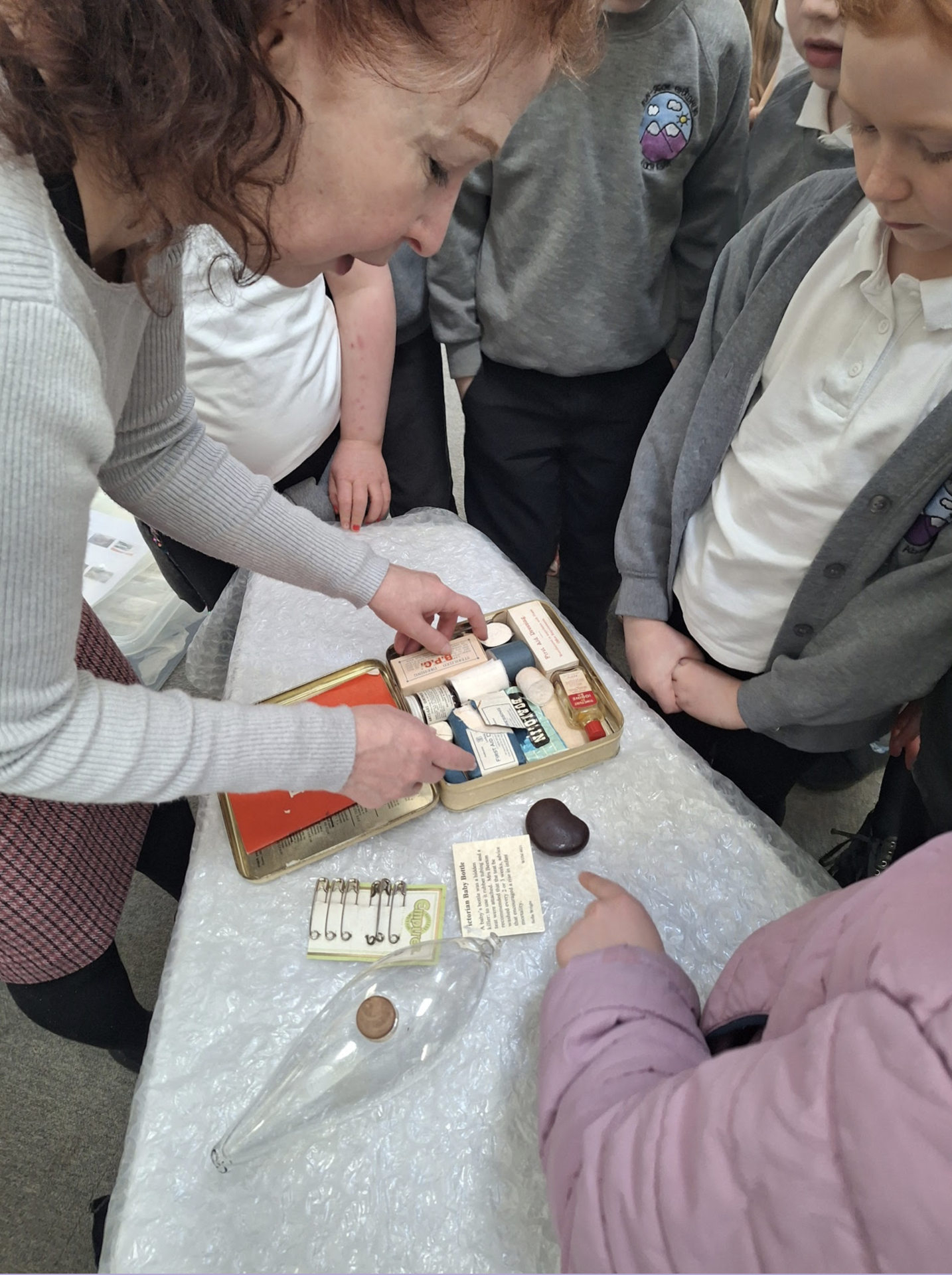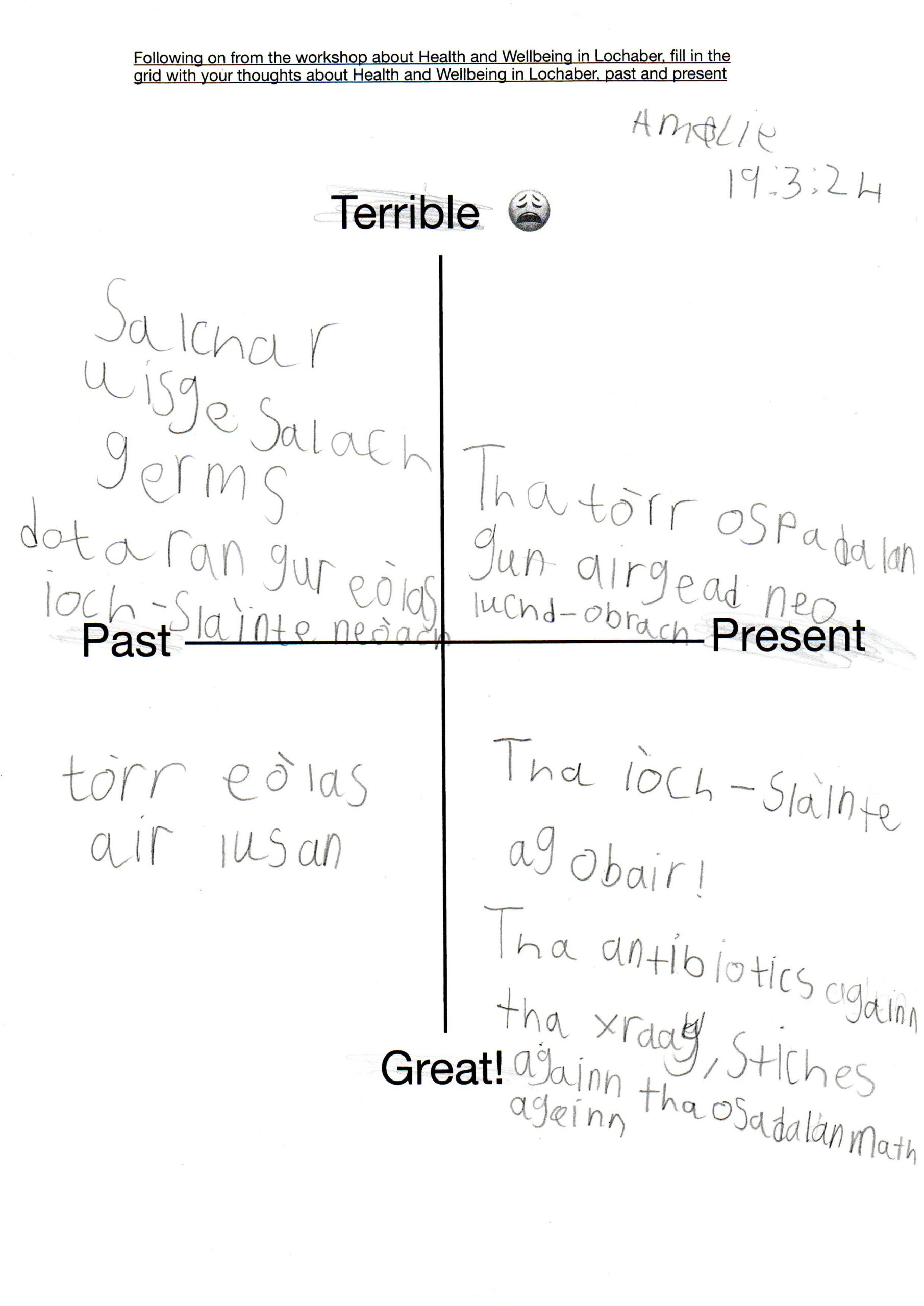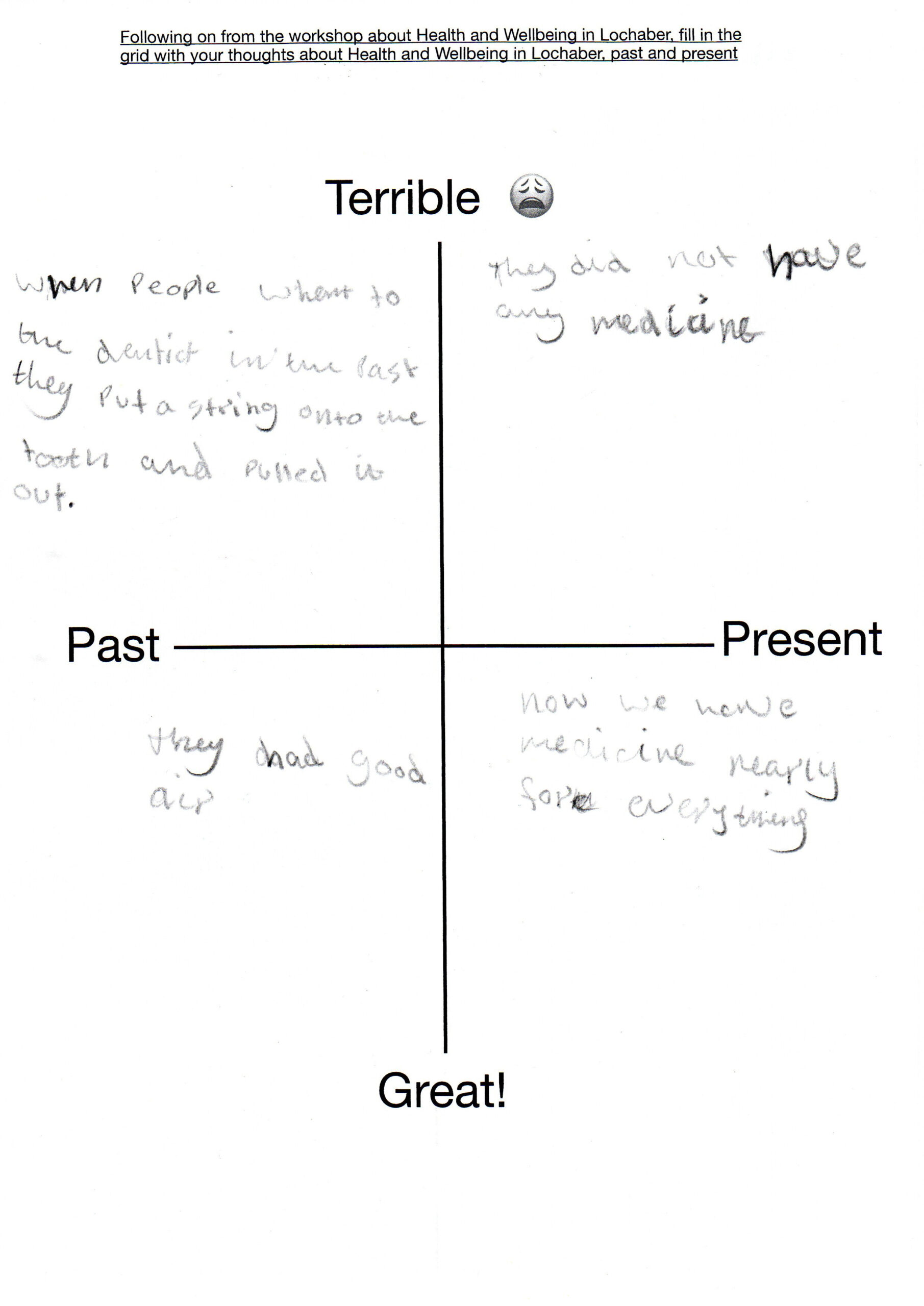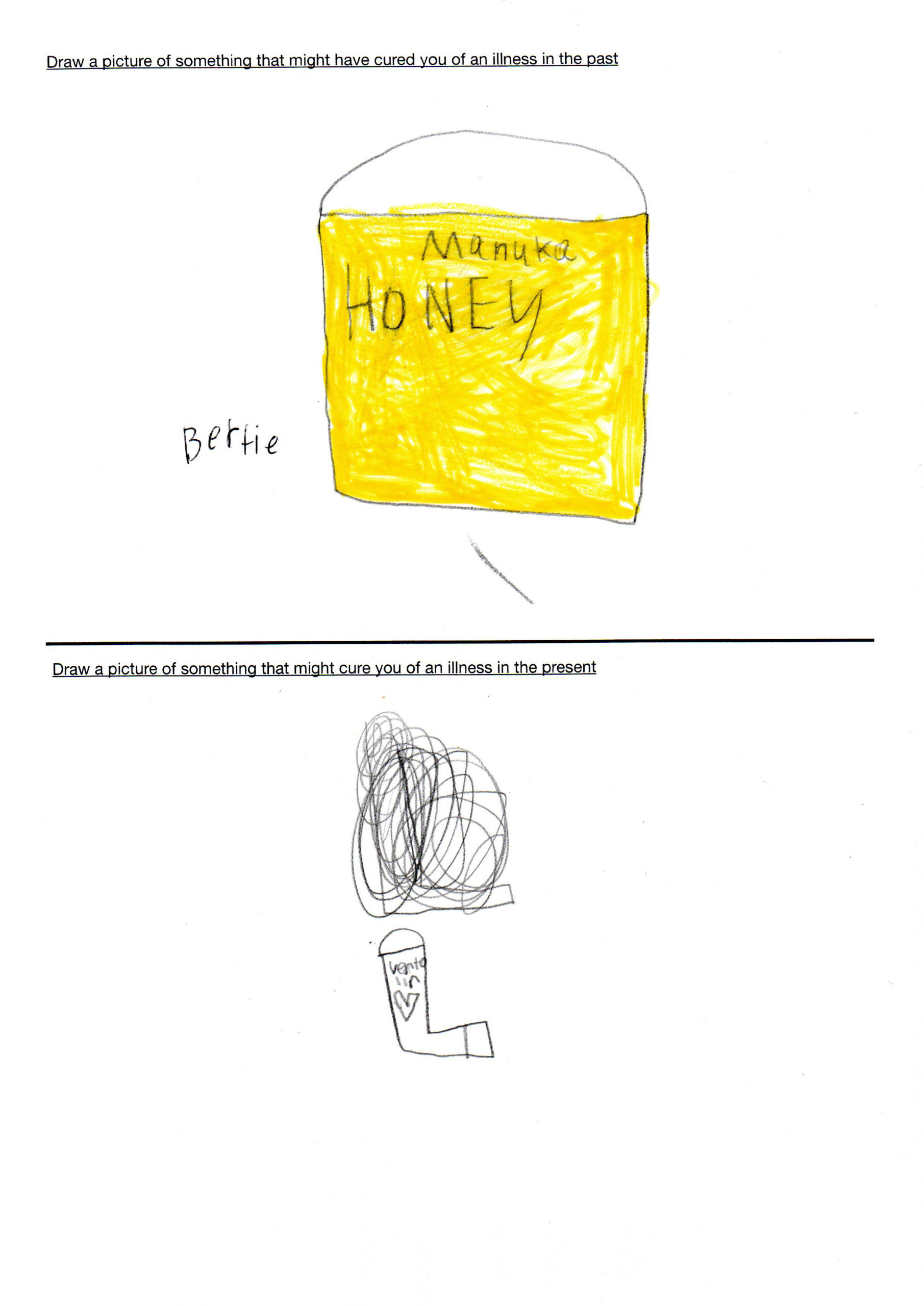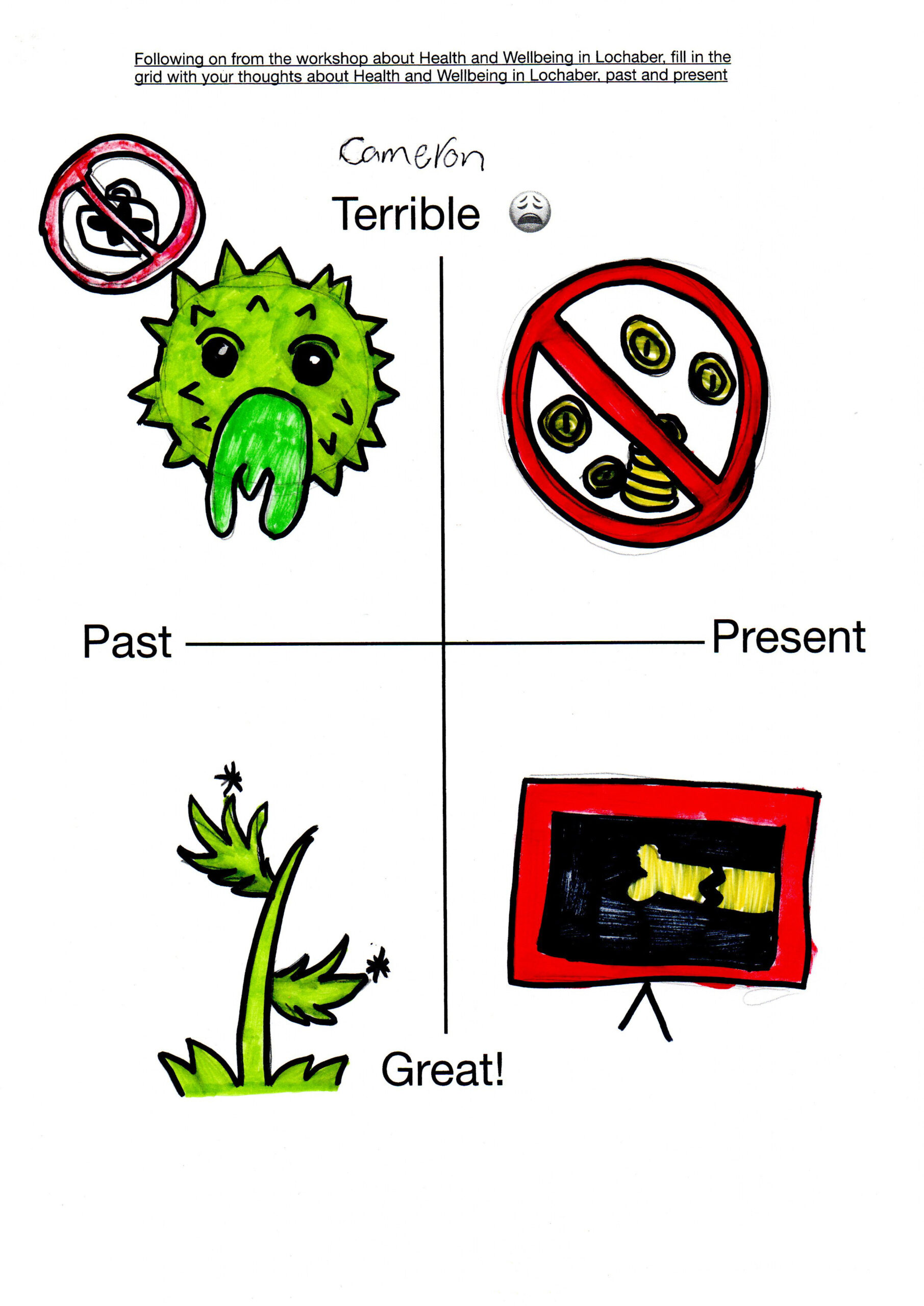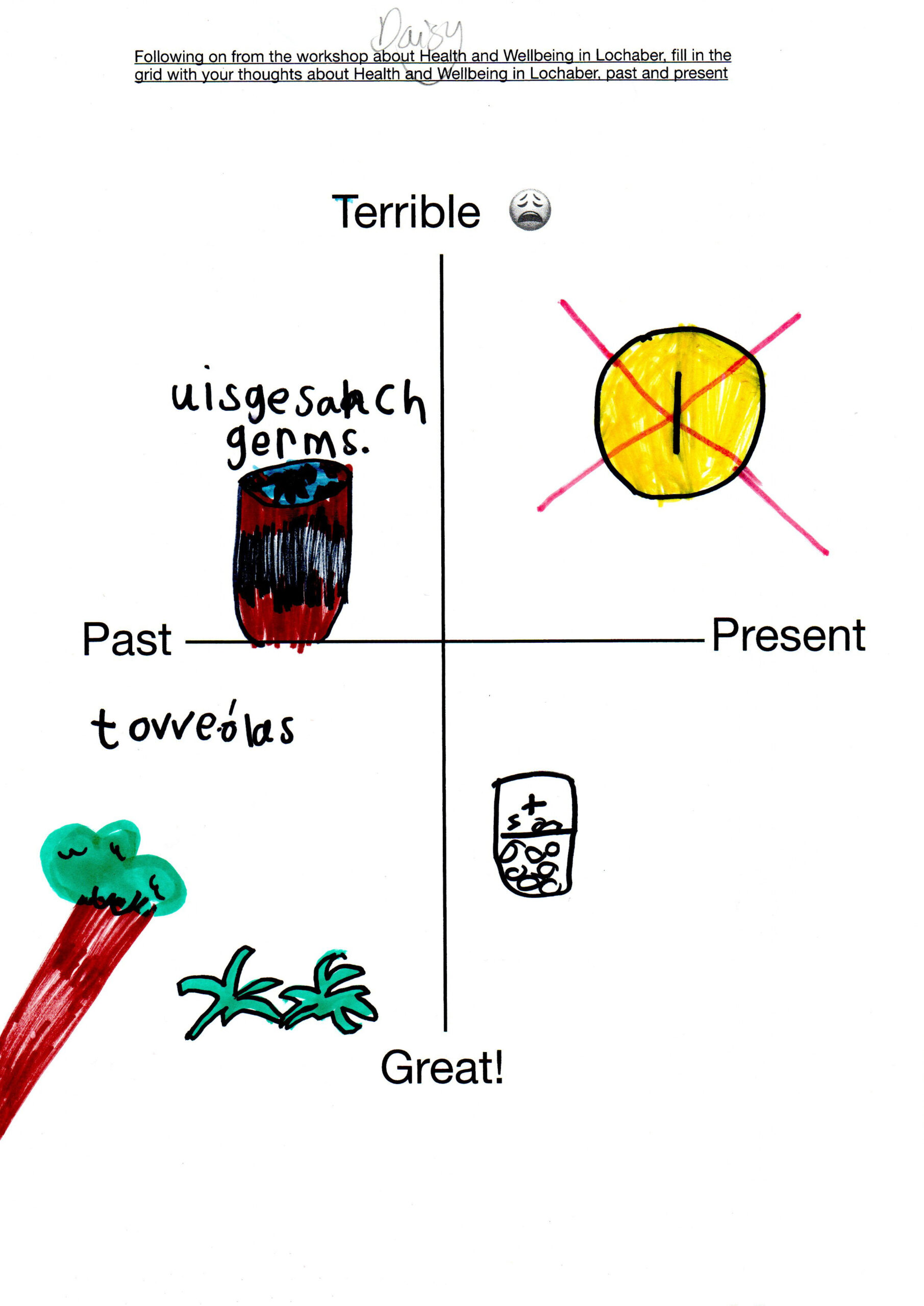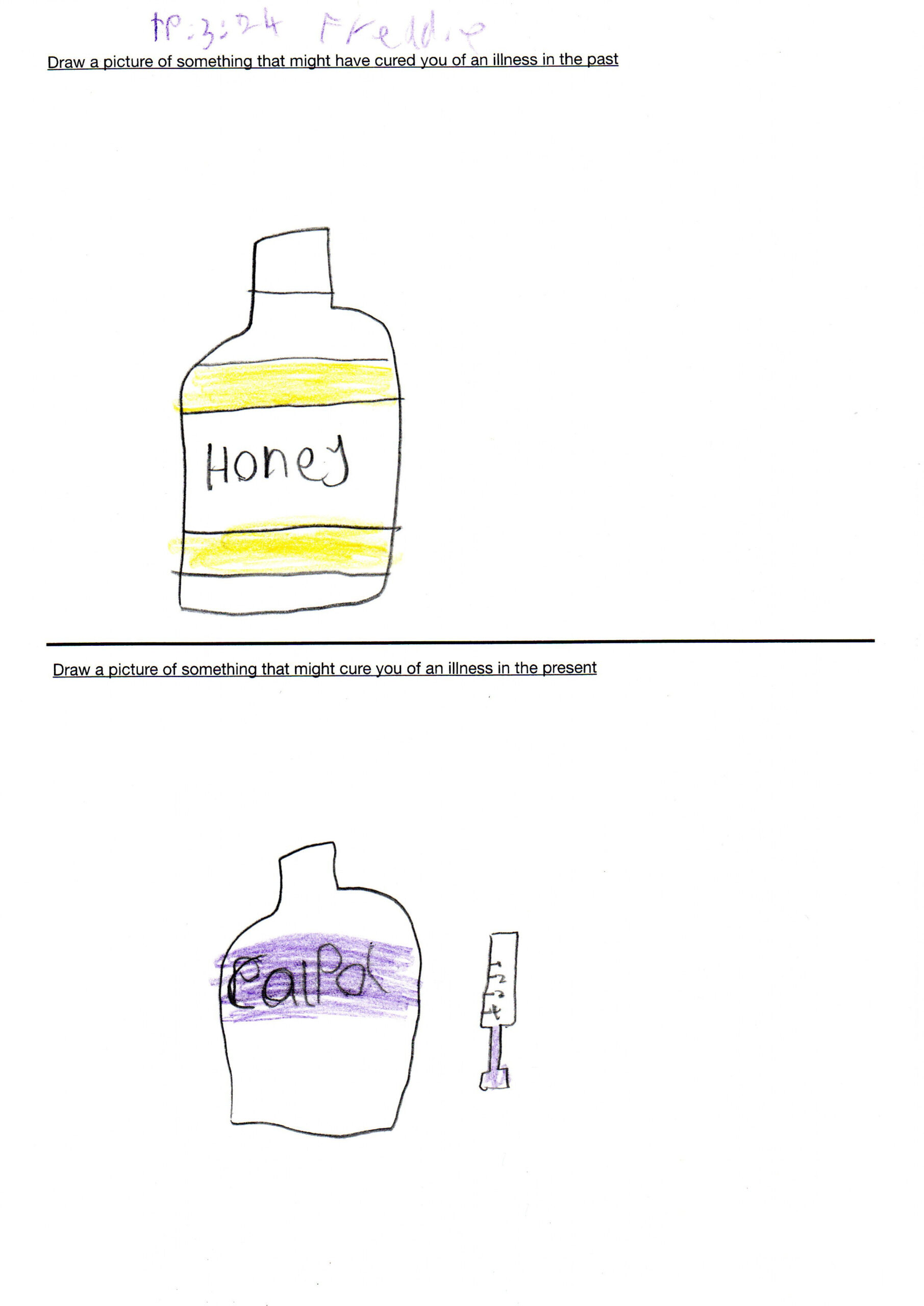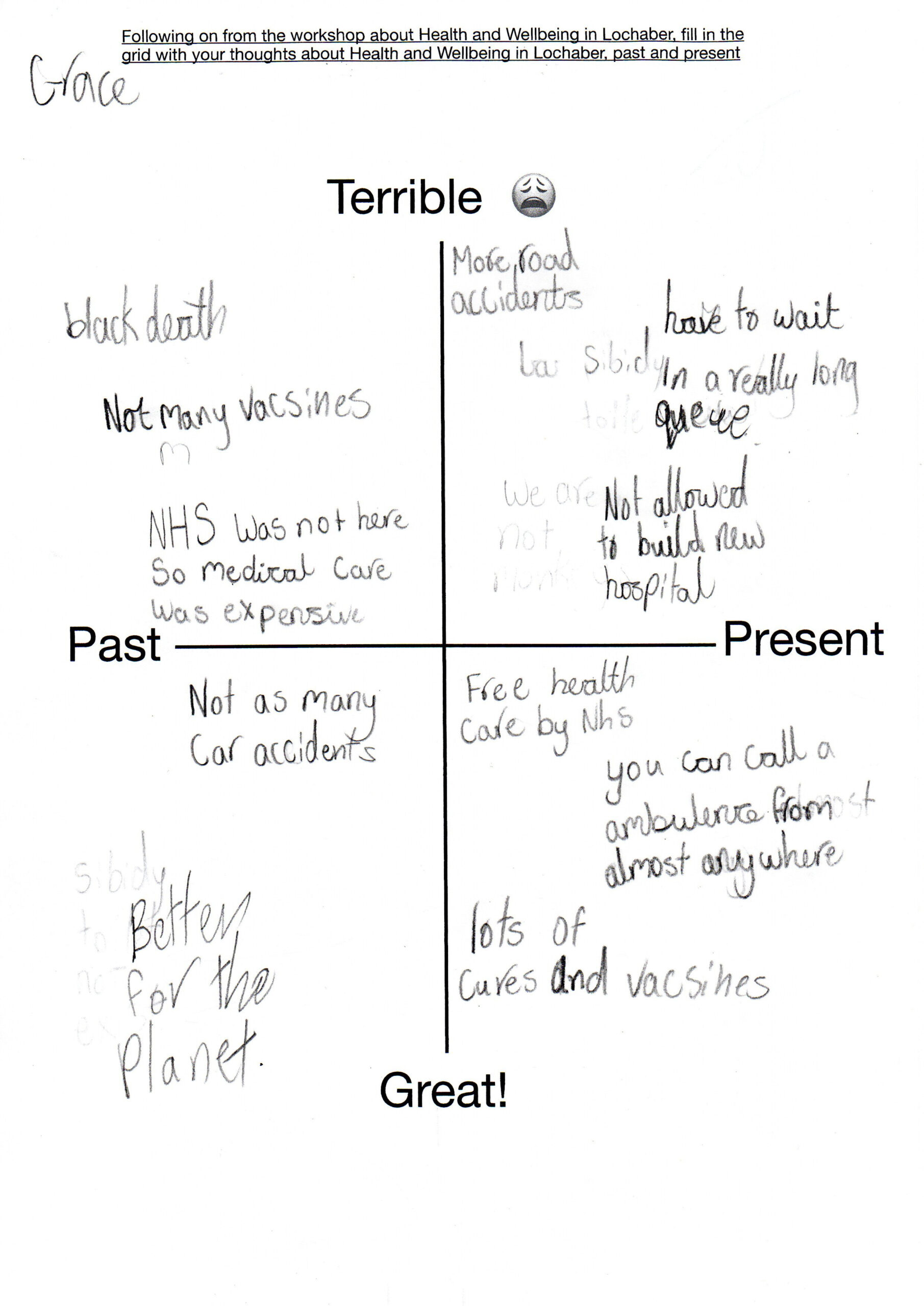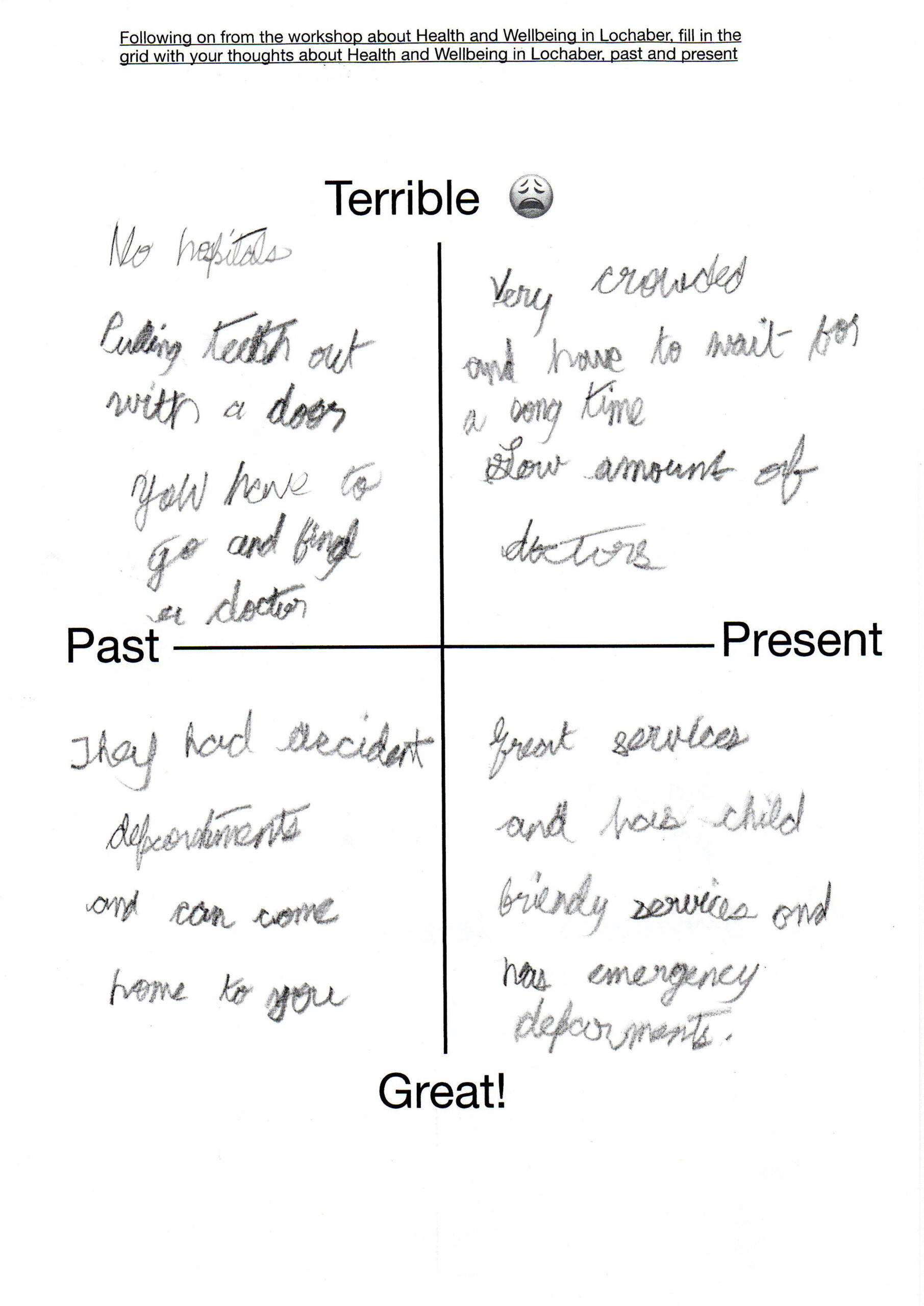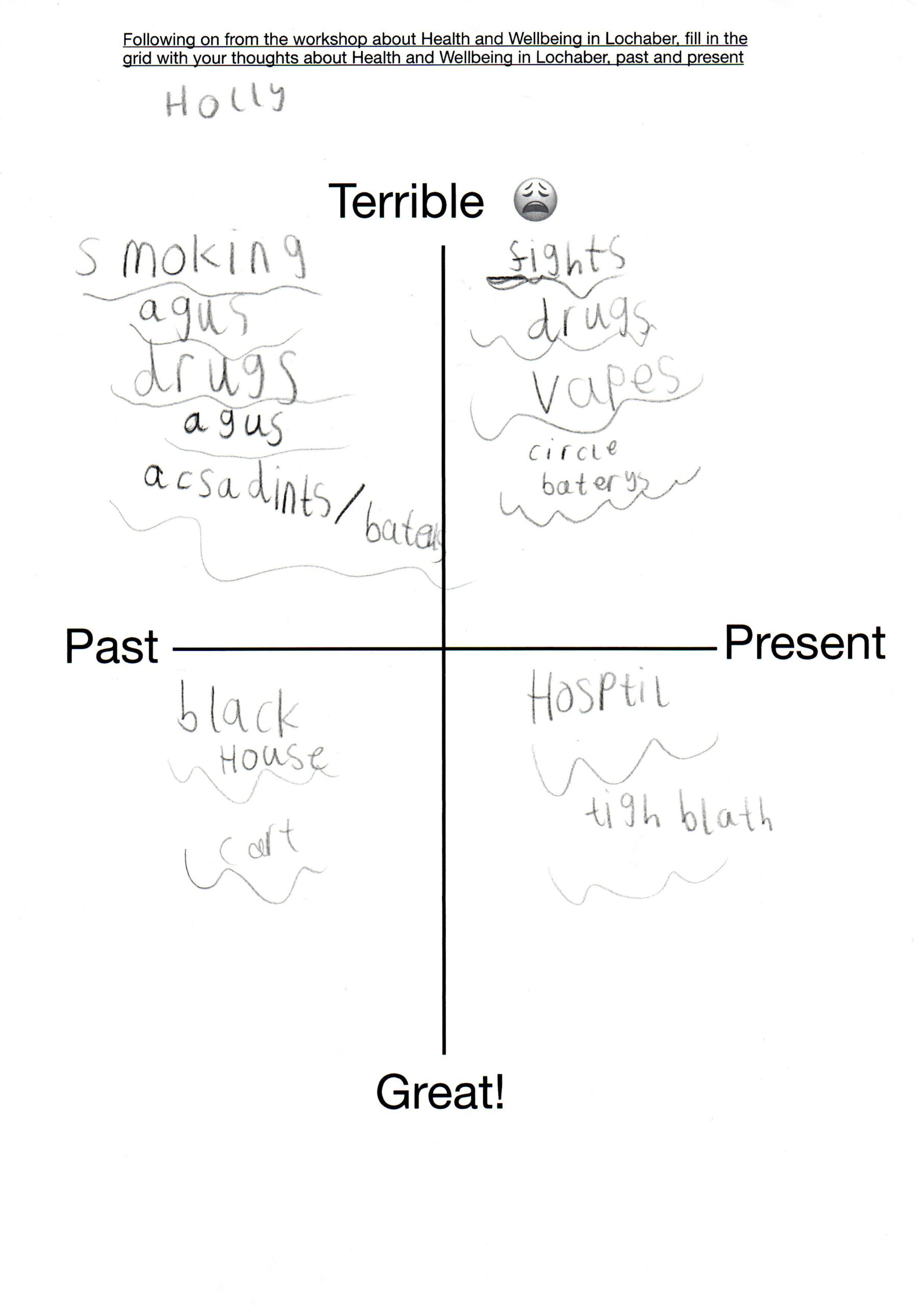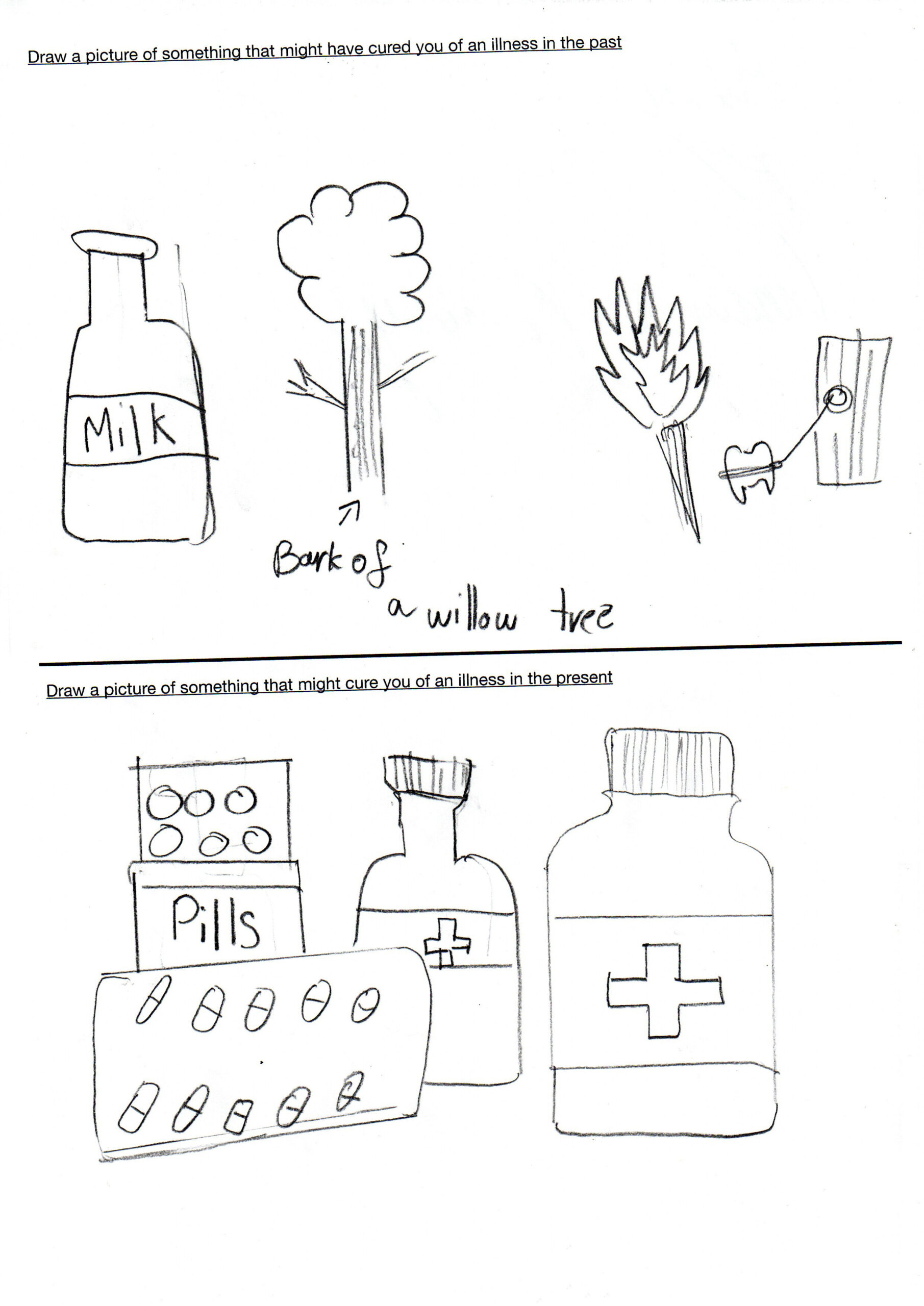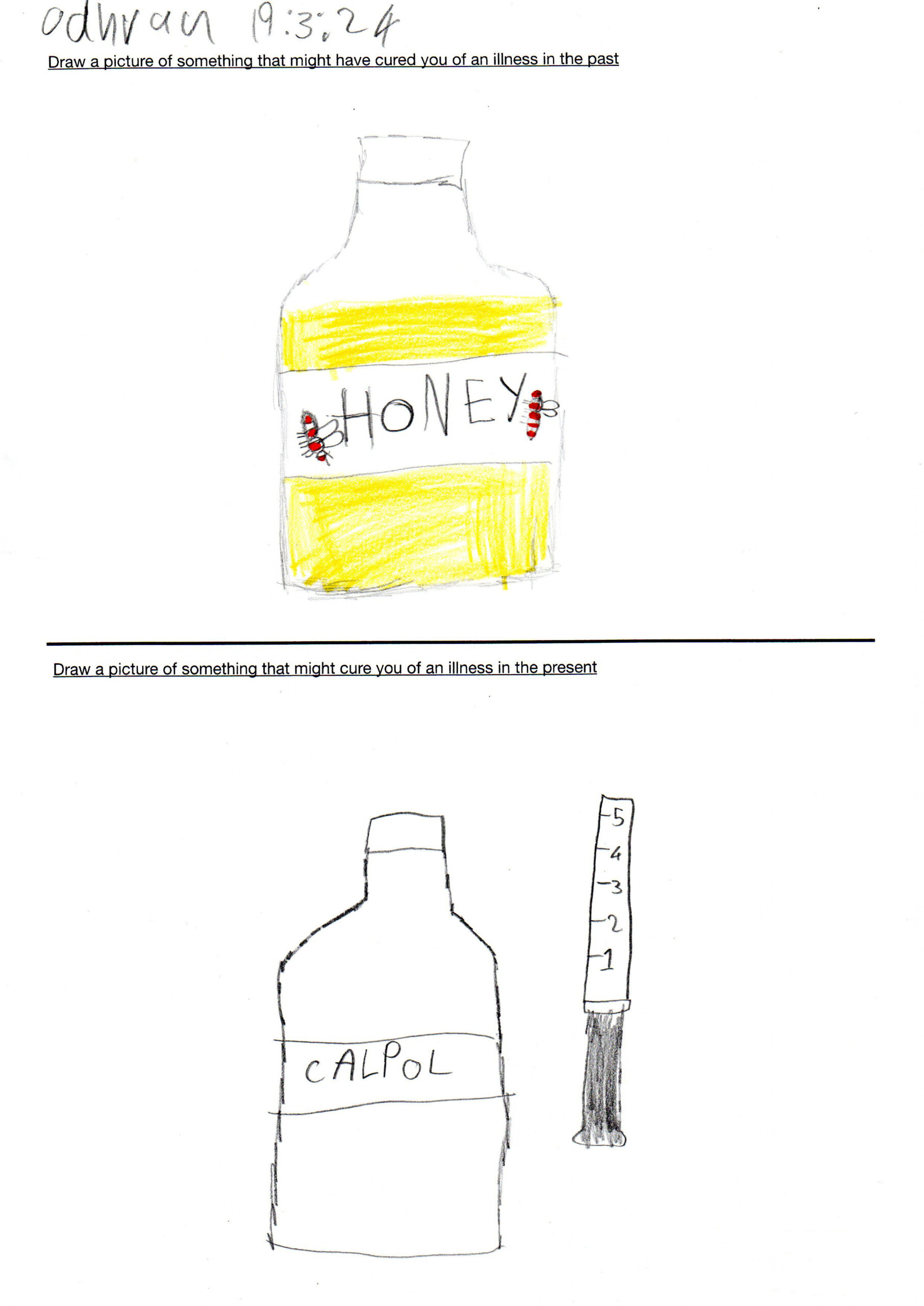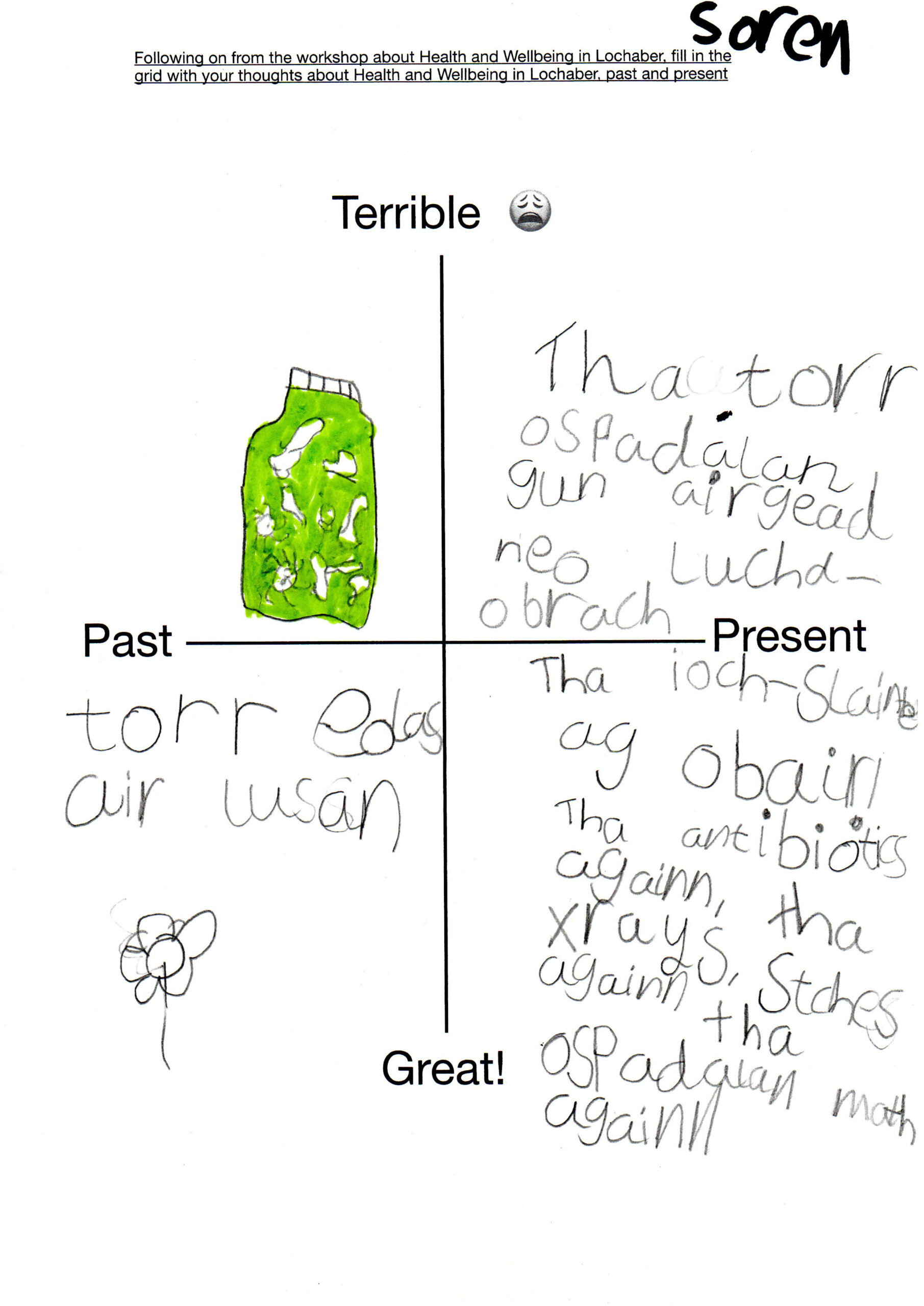Health and Wellbeing
Folk belief, healing and medicinal practice through the ages in Lochaber
Slàinte agus sunnd tro na Linntean ann an Loch Abar
Since the very earliest times in Lochaber, people have had particular beliefs about their health and wellbeing. In this topic, we look at some of these. We also consider the impact of advancements in medical knowledge, together with improvements in public health and sanitation.
So, let’s start with the basics!
What are the five basic necessities of life?
- Fresh air
- Clean water
- Good food
- Shelter
- Warmth
Brain Operations / Opairèisean Eanchainn.
Brain Operations / Opairèisean Eanchainn by Caitlin from Bun-Sgoil Ghàidhlig Loch Abar.
A tour of the West Highland Museum.
Examples of Diseases/Health problems in different time eras
Early people
Accidents – perhaps incurred while hunting, or fighting. Hunting could be very dangerous, but was an essential activity to obtain food, as well as hides/fur for clothing, sinew for cordage and bone for tools such as the Mesolithic bone harpoon in the WHM collections. With no understanding of hygiene, wounds could become infected leading to sepsis and death.
Childbirth – this was very hazardous for women. Not only during early times, but for most of human history, women had a one in ten chance of dying in childbirth. These outcomes improved dramatically with improvements in sanitation and diet, as well as medical understanding.
Malnutrition – food supply was always uncertain, and there would be times of scarcity and hunger.
Medieval/Early Modern Period
Plague – The bubonic plague of mid-14th century is little documented in the Highlands, but there is evidence of plague treatments, so it seems unlikely that Lochaber escaped this terrible scourge.
Poor diet – During the middle ages, poor people would be able to obtain meat around once a month. Many traditional Scottish recipes such as Scotch broth, could eke out a small amount of meat, and could be eaten by those who had lost teeth. There was no dentistry, and people could die of dental abscesses. Lack of vitamin C could cause loose teeth.
Warfare – Not only were men killed in battles, but war had a terrible aftermath for communities. The loss of working men could mean starvation. Men could be left with disabilities limiting their ability to carry out farm work.
Battle-injured soldiers would be treated by a ‘barber surgeon’ who was not a physician. There was no anaesthetic or medical hygiene. His equipment would include a range of grisly-looking saws, knives, pliers and hooks…and leeches. It wasn’t all wrong though – leeches can still be used in medical treatments even today, for certain types of wound.
The Age of Empires
Cholera was endemic in India. ‘Endemic’ means it was always present in that area but not spreading. British troop movements during the Empire years caused it to become pandemic. Most of you will be familiar with the word ‘pandemic’ – it means a disease that spreads rapidly, and probably internationally. Cholera was a lethal, terrifying water-borne disease which could kill you in a matter of hours. It swept over Asia, Russia and Europe several times,and was finally stopped when public sanitation was installed.
Smallpox – this was another killer disease which left its victims covered in nasty blister-like spots. Women who milked cows contracted a different, milder disease called cow pox which provided immunity to smallpox. This meant that their skin was saved from the terrible pock-marks left by smallpox.
Tuberculosis – This disease of the lungs was a major killer of the 19th century. It was spread by droplets in other people’s breath. It still exists today though it is rare in wealthier countries. Highlanders had to leave their croft houses, however humble, for overcrowded city tenements which provided ideal conditions for tuberculosis infection. Other killers were whooping cough, measles and typhus.
Potato famine/ Gaiseadh a’ bhuntàta – A potato disease caused failure of the potato crop in the mid-19th century. It caused the potatoes to rot in the earth, and made a horrible stench. The potato blight blew over from Ireland, where it caused over a million deaths, while millions more were forced to emigrate. As with Ireland, the poor Highland crofters were dependent on potatoes for survival, even though the land was producing other foods to be sold. In the Highlands, thousands of people died of hunger, and many more fled the Highlands to the towns and cities of the Central Belt.
Poison – a lack of knowledge about dangerous substances meant that some ‘cures’ could contain poisonous mercury.
Child mortality – Deaths of children under ten accounted for more than half the deaths in the 19th century. The highest proportion of deaths occurred in the age group under five years.
Sanitary improvements – Clean water is an absolute essential for human life. in the second half of the 19th century, public works began to be carried out to improve public sanitation, and inspectors were appointed. But in the Highlands, progress was slower. Human waste (poo) was still being disposed of in a midden or ash-pit behind people’s houses, and water often stored within homes, which was not sanitary.
20th Century
There were huge leaps forward in medicine together with rising living standards, diet and hygiene, especially after the World Wars. This transformed health and wellbeing for the people of Lochaber.
The National Health Service was founded in 1948.
Infant mortality fell by 89% between 1911 and 1968.
The old Belford Hospital was built in 1865, and the one we have today was built in 1965.
The battle against the diseases of poverty was mostly won by 1950.
Smoking was almost universal. Everybody stank! Ashtrays like this were disgusting!!
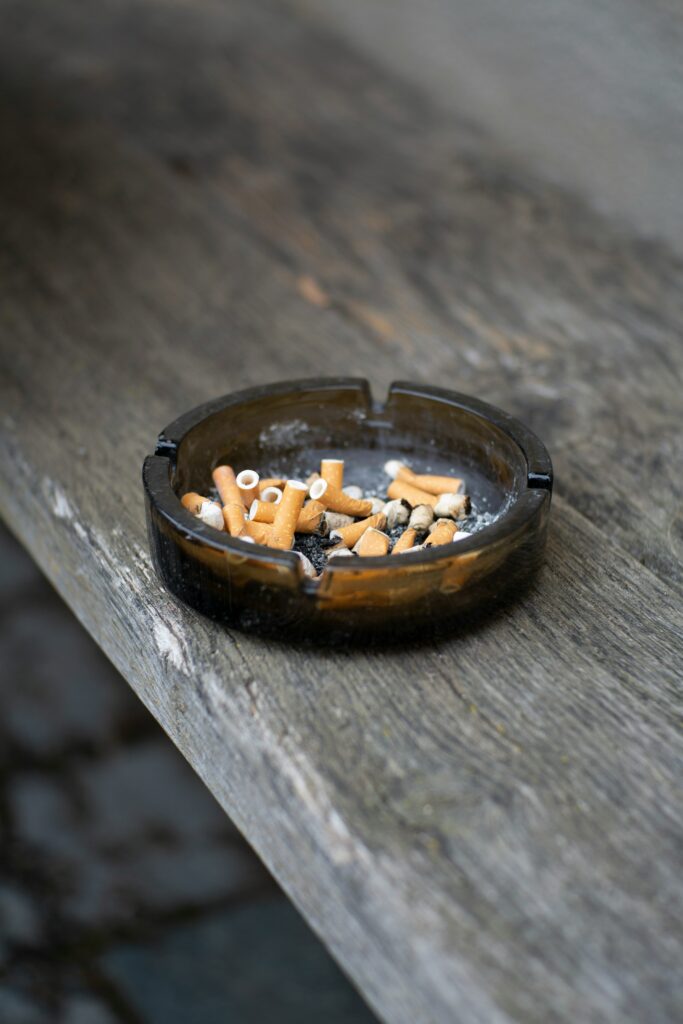
21st Century
Sedentary lifestyle – this means we are sitting too much! This can cause health problems such as type 2 diabetes and heart disease. We need to ensure that the importance of exercise is understood.
Unhealthy food – Sadly, unhealthy choices are often cheaper, so achieving a healthy diet will be very hard for many people. Also, many people prefer processed, sugar-laden foods. What makes a healthy balanced diet? A healthy diet can be achieved whether we eat Western/Scottish food, or for example Asian or Polish cuisine.
Mental health – many people find 21st century life very stressful. As society changes, one issue nowadays is lack of community. Many of us spend too much time with our phones.
The Future
We are lucky to live here in Lochaber – a beautiful place, in a country with a National Health Service.
What would be an ideal future for people’s health and wellbeing in Lochaber? Do you have any ideas that would help people live healthier and happier lives? For example, vegetable growing projects, free access to sporting and hobby activities, and getting involved in projects to improve a sense of community.
Want to learn more?
An Illustrated Treasury of Scottish Folk and Faery Tales, book by Theresa Breslin
Horrible Science: Blood, bones and body bits, book by Nick Arnold
DK Eyewitness Guides: Medicine, by Steve Parker
Celtic Medical Treatments – Folk Medicine article by the Royal College of Physicians of Edinburgh https://www.rcpe.ac.uk/heritage/celtic-medical-treatments
See in the museum?
A variety of charmstones are on display in a case in Room 3 of the museum.
A charm for good luck which belonged to Colonel John Cameron, from around 1810. It is a folded cloth wallet, made of silk Gordon tartan. It contains a letter and a small square of satin with pebbles, seeds and pieces of stalk sewn in, as well a tiny padlock. The charm was given to him to keep him safe in battle.
A Palmer Injector, located in the Highland Life gallery. This is an insulin injector gun invented in 1955 by Mr. Charles Palmer who lived at the Factor’s House, Torlundy. Mr Palmer had Type 1 diabetes. People with Type 1 diabetes need to inject insulin several times a day to survive. Palmer’s device was designed to make it easier for people to inject themselves with insulin. The gun was not only used for insulin, but for giving injections to children in school clinics and hospitals. Nowadays, diabetic people have much more convenient pen injectors.
Interesting places to go
Out! Go outside for a walk, or with your wheelchair if you use one, where it is safe to do so. Perhaps organise a game or sport, it will make you healthier and happier!
Activity suggestions
Draw a plate showing a healthy balanced meal. The food can be from any cultural background.
Good or terrible? In groups or individually, write a list of things relating to health and wellbeing, which were worse in the past, and another of things which are worse now. Then do the same for ‘good’; list things which were better in the past, and things which are better now.
Write a story, choosing an era from past Lochaber, and imagine one day in your life. You can describe your home and living conditions, and what you ate and did throughout the day.
What did our partner schools do?
The pupils all took part in workshops delivered by the WHM learning team. We were also fortunate to have the expertise of retired GP Dr Chris Robinson, who has a vast knowledge of the history of medicine in the Highlands. Dr Robinson, a Director of West Highland Museum, gave generously of his time to speak to pupils.
A box of objects was brought from the museum for the pupils to handle and observe. This included sea bean charms, a World War II first aid kit, a banana-shaped glass bottle for feeding babies, and a stethoscope provided by Dr Robinson. A stethoscope is used for a doctor to listen to people’s lungs and hearts.
Pupils took part in classroom discussions to consider the pros and cons of different times in history with regard to health and wellbeing.
Bun-Sgoil Ghàidhlig Loch Abar pupils learning about Health and Wellbeing.
The filled in version of the past present illness by Bun-Sgoil Ghàidhlig Loch Abar pupils.
A gallery of models made by pupils from Bun-Sgoil Ghàidhlig Loch Abar.
